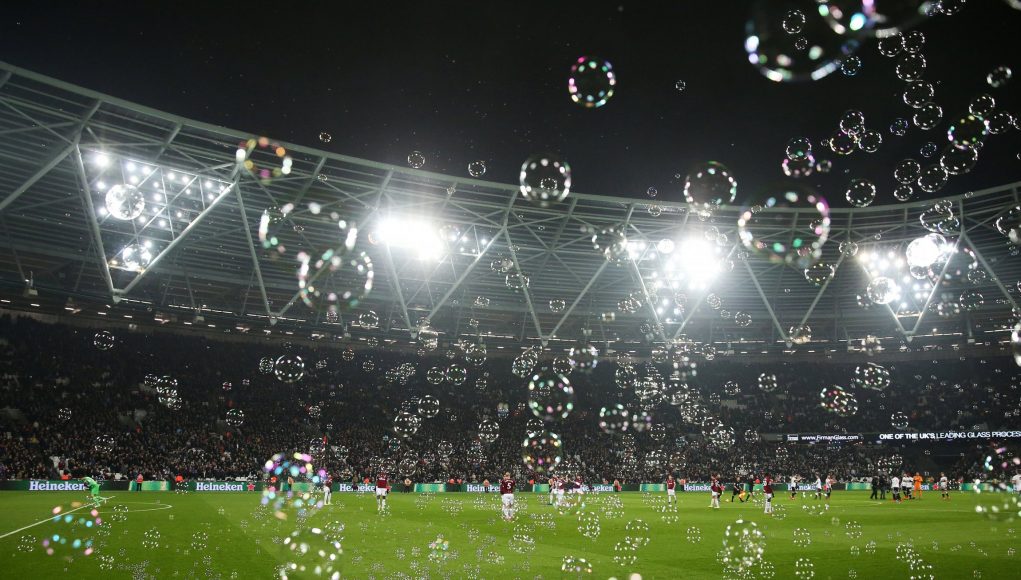West Ham have broken their transfer record five times since switching to London Stadium in 2016; so has the move given the Hammers the platform to do so?
The Irons made the short 3.5-mile switch from Upton Park to Stratford brimming with excitement and optimism that the changeover would give them the platform to compete among the big boys. Life has been difficult for the east London club since then, but the tides are slowly changing.
Over the course of their three-year tenure at London Stadium, West Ham have broken their transfer record five times for substantially larger fees than they did at Upton Park – Andy Carroll for £15m in 2013 was the club’s record transfer in the history of the Boleyn Ground.

The first to break the transfer record at London Stadium was Andre Ayew – signing from Swansea City for £20.5m. That was broken by the acquisition of Marko Arnautovic from Stoke City for £20m rising to £25m.
In the summer of 2018, Chilean manager Manuel Pellegrini was brought to the club and spent over £100m on an array of talent. France defender Issa Diop was one of those and the 22-year-old signed from Toulouse for £22m. The Hammers broke their club transfer record twice that summer, with the £36m arrival of Felipe Anderson part of the 2018 overhaul.
The most recent signing to break the transfer record is France striker Sebastien Haller – switching to east London from Eintracht Frankfurt for £45m. With such excellent coups during this time, would the Hammers have made these signings if they remained at Upton Park?

Football, in general, is evolving into a monetary-based environment. It has been a business for years, but the extortionate values and demands in the modern era is changing the way the game is played.
Inflated prices are part and parcel of football – as the years go by, prices will inevitably rise – which could argue that the move to London Stadium did not have an impact.
Upton Park was the beloved home to so many West Ham fans. There was a sentimental attachment to their place of worship and played a huge part in their experience growing up. However, the aforementioned club-record signings would not have that attachment. London Stadium is an excellent attraction and incentive for players – especially coming from overseas.
When these players are shown the 60,00 seater arena, it excites them, simple as that. Although Upton Park was a remarkable ground, London Stadium is almost double the capacity, and for these players, playing in front of that many spectators is certainly an eye-catching prospect.
As previously mentioned, football has become money-driven to an extent where Harry Maguire is valued at £80m. Ludicrous demands from clubs and agents is inflating prices at a rapid pace. For footballers, this is their occupation and if they can earn more money at another club, more often than not they will.
What £80 million buys you in:
2009 – Cristiano Ronaldo
2019 – Harry Maguire #MUFC pic.twitter.com/W4ptC7nahd
— William Hill (@WilliamHill) July 14, 2019
West Ham made £122m throughout the 2018/19 campaign from TV rights, merit payments, facility fees and finishing 10th. Bournemouth, who finished 14th, made £108m yet they have the lowest capacity stadium in the Premier League – the Vitality Stadium seating 11,329 spectators.
London Stadium is almost six times larger than the Cherries’ ground, again suggesting that even if the Hammers remained at Upton Park, there would be a fair share of money to spend.
There is no denying that money has rapidly become the forefront of football over the years and Premier League clubs are inheriting great amounts of wealth, regardless of where they finish. However, London Stadium as an attraction has, in my opinion, made a positive impact on helping deliver such excellent signings for the Hammers, but it is not the sole factor.
Would Sebastien Haller have signed for West Ham at Upton Park? Who knows, but the switch to Stratford has globalised the club and marketed it in more ways than people think.








